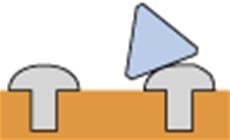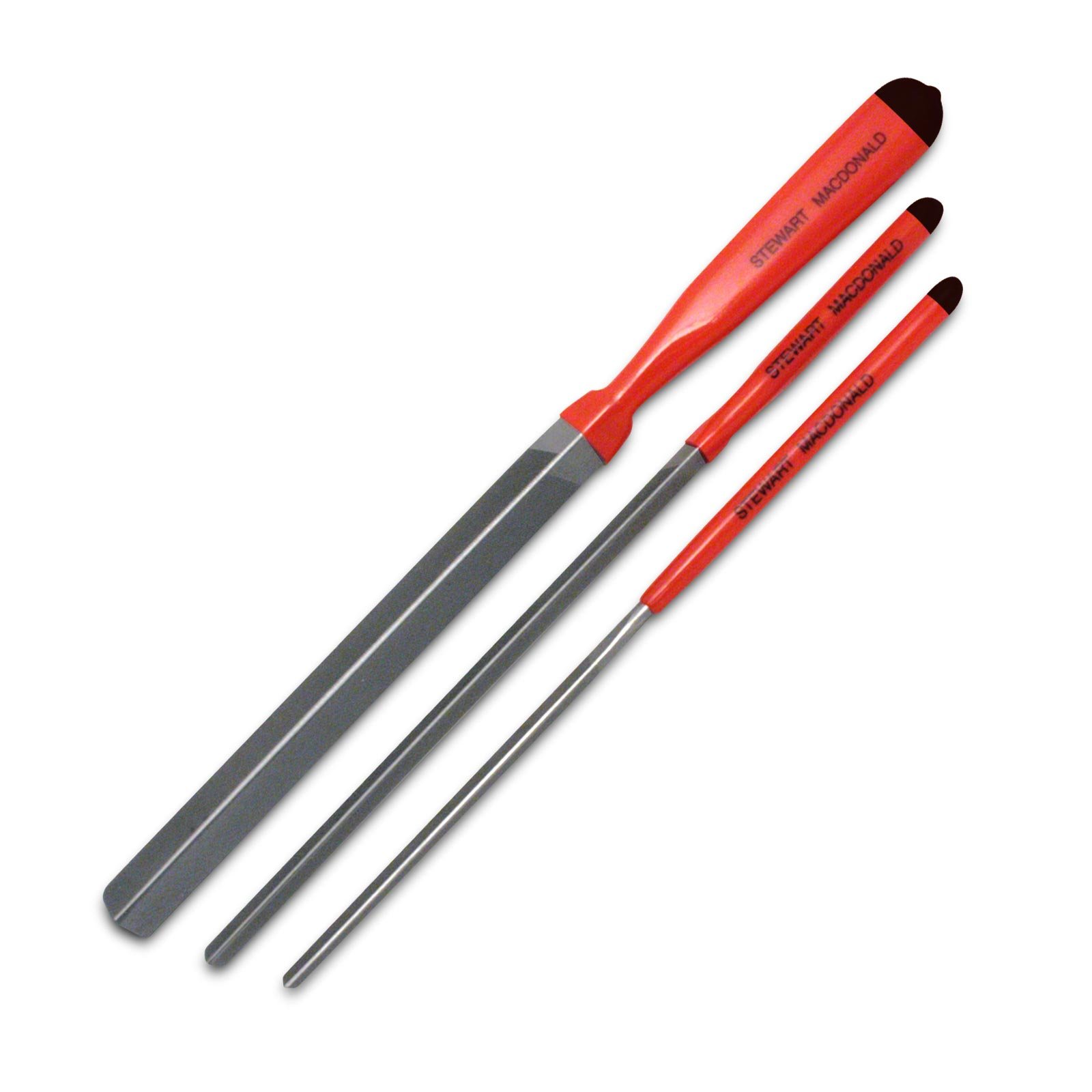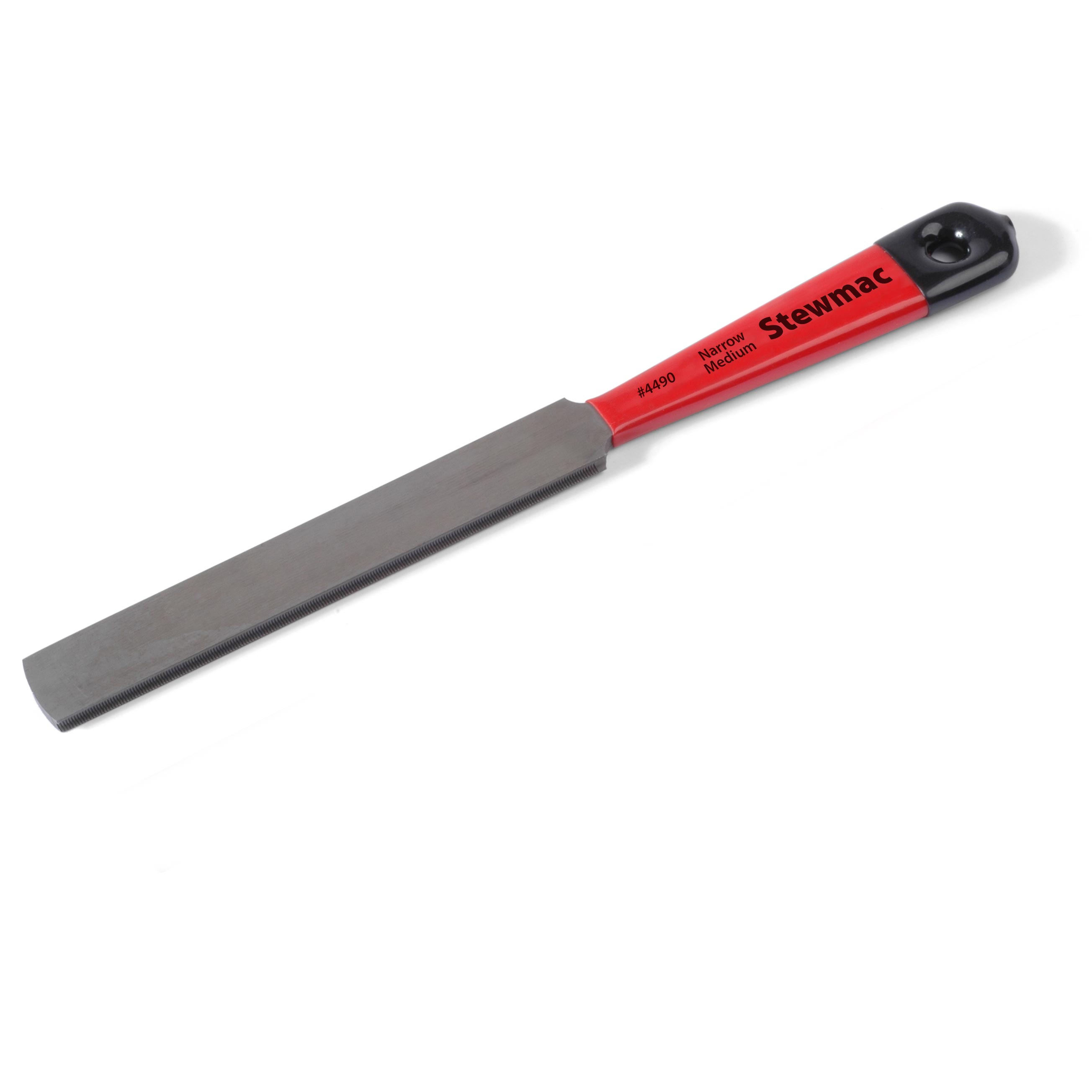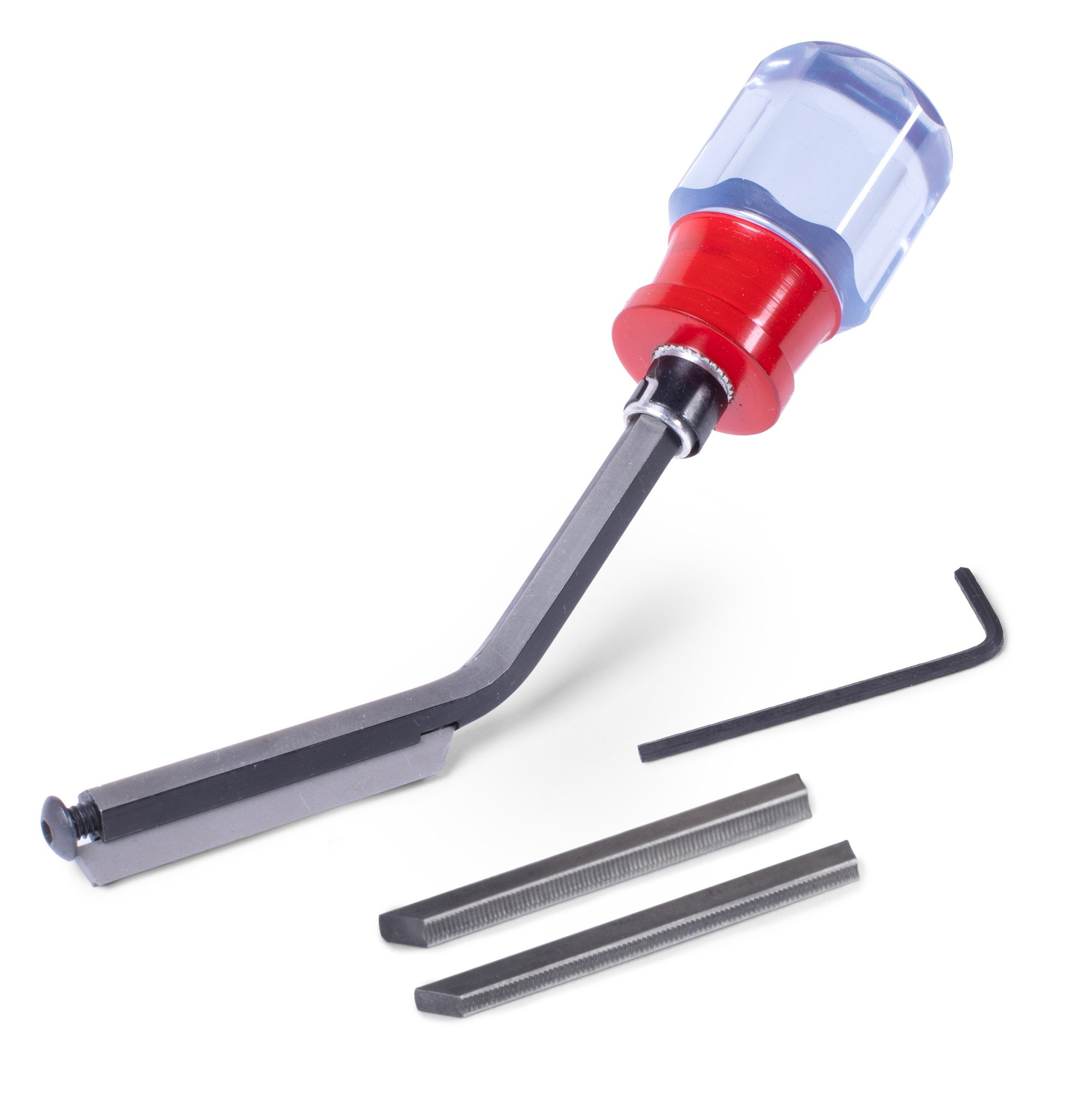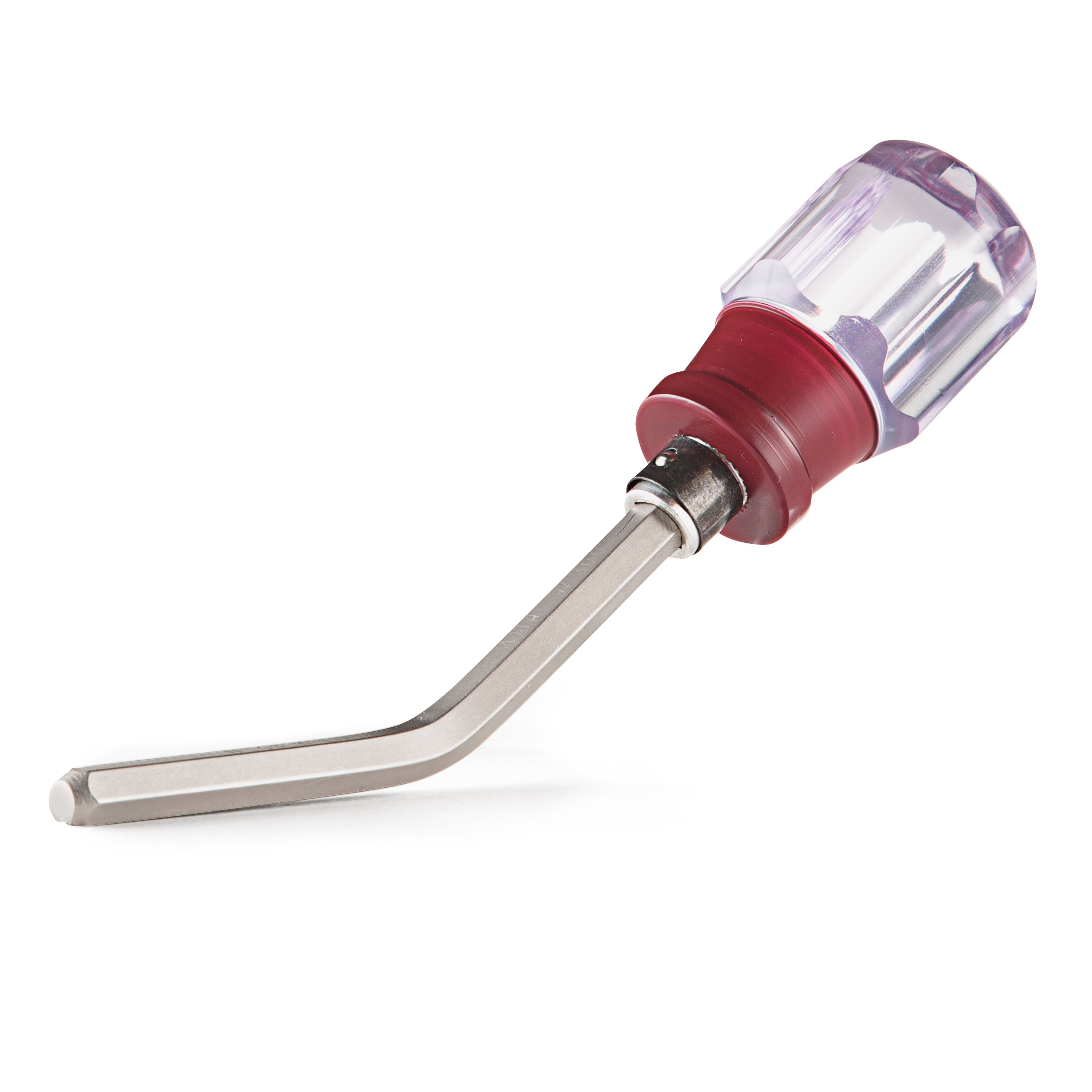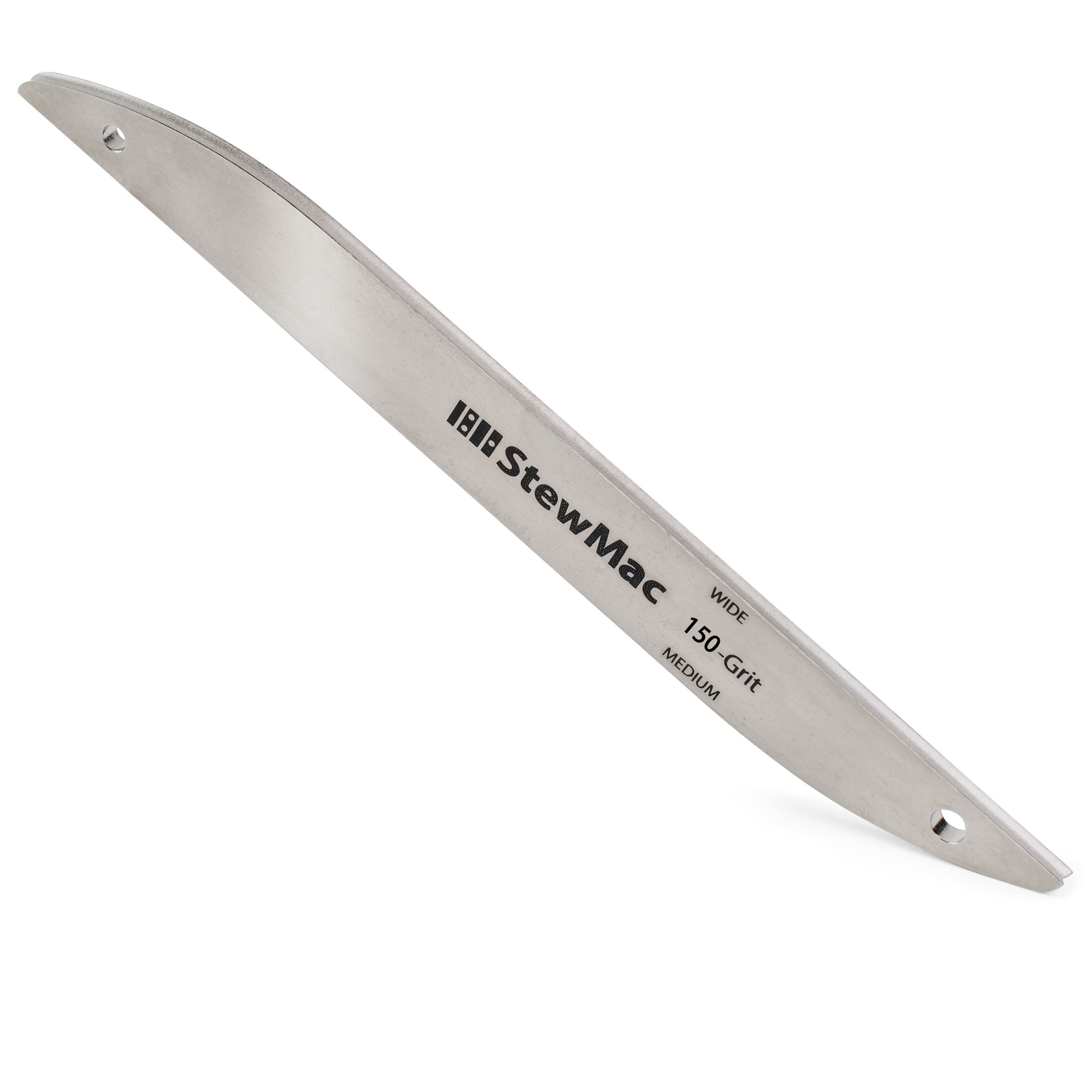How to choose a fret-crowning file
Too many fret files? This’ll help you choose.
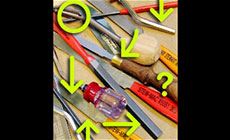
“Which fret crowning file is the best?” That's as hard to answer as “Which pen is the best one to write with?” It’s about what works best for you. Here are some details to help you choose...
These files are all for crowning frets, so what’s the diff?
It’s not all about the files: the way you do your fret jobs makes a difference.
The frets in this drawing were installed unevenly. After a fret leveling file was used on them, the flat area on top of each fret is a different width. The top of #2 needs only a tiny bit of filing to return it to a nice rounded crown. The others need more shaping, and more metal removed.
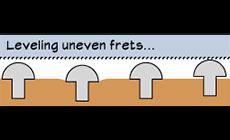
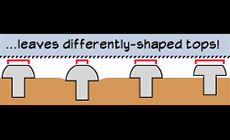
So the way you install frets is one reason for preferring different files. You might need to take off lots of metal fast, or maybe you have a lighter touch. (Different strokes for different folks!) Let's take a look at some of your crowning file choices:
These are the most popular crowning files in Dan Erlewine’s shop:
The medium 3-corner file was designed for fret dressing, but it’s the favorite for crowning among those of us doing fret work in Dan’s shop. He saw these files being used at Gibson’s Kalamazoo factory back in the 1960s, and he still swears by it. Use it by moving along the side of the fret, rolling up onto the crown with each stroke. It takes a little practice, but it gives really good control to shaping the crown. The toothless corner edges keep the file from marring the fingerboard.
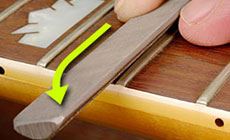
The picture above shows the largest version, which is called a “cant file.” This is the shape preferred by luthier Frank Ford: instead of 3 equal sides, it has one wide and two narrow — giving you a choice of corner angles, too.
These fast-cutting files are basics in everybody’s shop:
The double-edge file has two concave cutting surfaces for rounding a flattened fret top. The design is based on the first crowning files that we know about, going back to the 1950s. This fast-cutting file really hauls off some metal in a hurry.

When somebody wants just one file, here’s what I recommend:
The 3-in-1’s been popular since Michael Gurian designed it over 20 years ago. The kink in the shaft lifts the handle up away from the guitar, protecting the top.
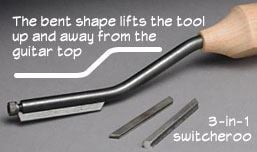
Since it has 3 interchangeable cutters, I recommend the 3-in1 to folks who want one file for all situations. I’d rather not to stop and change cutters myself, but the switch is really fast — and I like the wooden handle.
Here’s another Gurian design: the quarter-round fret file lays on the fingerboard and crowns the frets from the sides.
Quik Snip Tip!
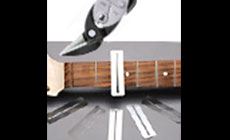
If your metal fingerboard guard is too wide to fit between the upper frets, just trim the sides with a sharp pair of snips. File or sand to clean up any burrs left on the edges.
Diamonds are a fretter’s best friend!
These files cut with abrasive grit instead of teeth, so they don’t “chatter” and they’re easy to control:
Stewart-MacDonald pioneered the use of industrial diamond coatings on fret files. Instead of using teeth, these 150 & 300 grit files shape the crown by sanding. Diamond files don’t “chatter” like files with teeth do, so they don’t leave the marks that regular files often do. They cut on both the push and pull strokes, and are easier to control than traditional toothed files. The offset shape of this file is comfortable, and lifts the body of the tool up away from the guitar top, giving extra clearance to protect the body.
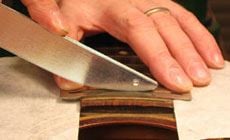
Shaped like the popular 3-in-1, but upgraded with diamond grit:
This 2-in-1 diamond file is offset-bent so it clears the body, and it quick-changes between 150 & 300 grit. This is a new design that’s getting popular fast.
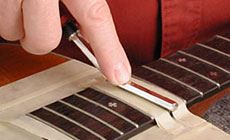
Traditional file shape, but with a longer cutting stroke (and diamond):
The good ol’ traditional file shape, but with a longer cutting surface. And it's a diamond-cutter instead of a toothed file.
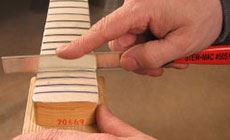
Whew! That’s a lot of files!
I’ve got to admit so many files can get confusing. But every one of these has hundreds of luthiers who swear by it. If you're about to buy your first fret files, I hope this helps!
Leveling
Leveling files lower the tops, so all frets are the same height.
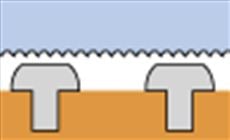
Crowning
Crowning files reshape the frets after leveling, getting them nearly round again.
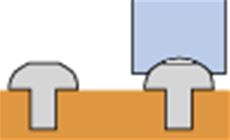
Dressing
Dressing files are for final rounding and touch-ups.
